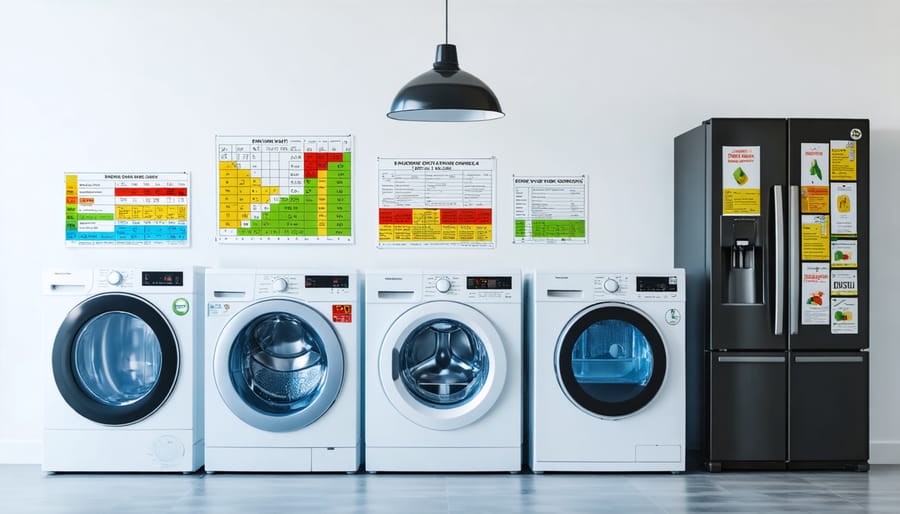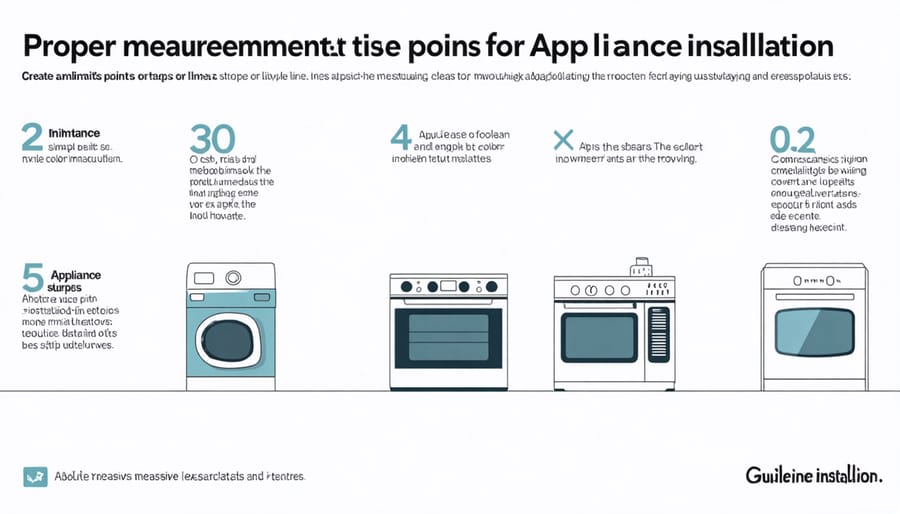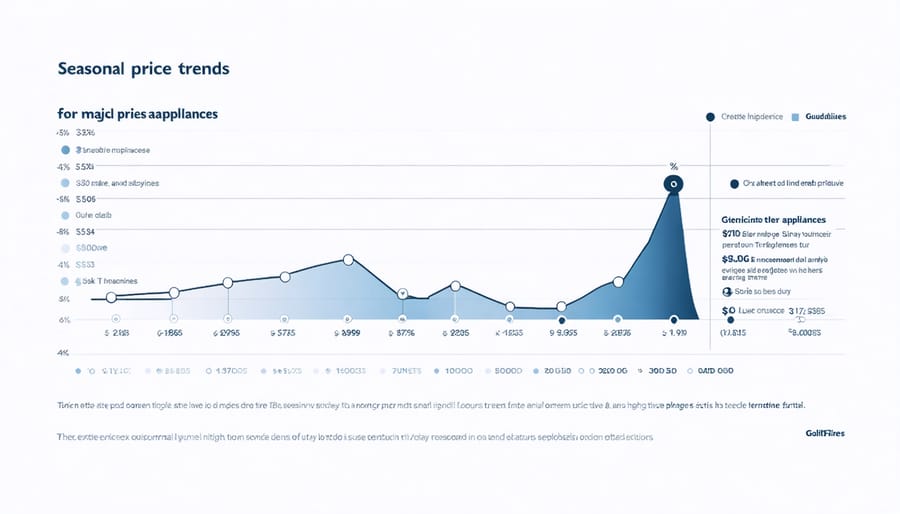
Smart Shopping: How to Choose Home Appliances That Actually Last
Making smart decisions about essential home appliances transforms your daily life and protects your investment. Research shows that informed appliance purchases can reduce energy costs by up to 30% while extending product lifespan by years. Modern appliances bring game-changing features – from AI-powered washing machines that optimize water usage to smart refrigerators that help reduce food waste. This guide cuts through marketing hype to deliver expert insights on selecting, comparing, and maintaining major household appliances. Whether you’re furnishing your first home or upgrading existing equipment, you’ll discover how to evaluate build quality, assess energy efficiency, and identify the features that truly matter. We’ll explore proven strategies to maximize value, avoid common buying mistakes, and ensure your appliance investments deliver reliable performance for years to come.
Essential Features Worth Your Money
Energy Efficiency Ratings Explained
Modern appliances come with energy efficiency ratings that can significantly impact your utility bills. In the US, the ENERGY STAR label is your quick guide to identifying energy-efficient appliances, typically using 10-50% less energy than standard models. Look for the yellow EnergyGuide label, which shows estimated annual operating costs and energy consumption compared to similar models.
For most appliances, the rating system uses a scale from A+++ to G, with A+++ being the most efficient. While energy-efficient models might cost more upfront, they often pay for themselves through reduced utility bills within 2-5 years. For example, an A+++ rated refrigerator could save you up to $100 annually compared to a lower-rated model.
When comparing ratings, consider the appliance’s size and your usage patterns. A smaller, lower-rated appliance might actually use less energy than a larger, higher-rated one. Additionally, smart appliances with energy management features can help optimize power consumption by running during off-peak hours when electricity rates are lower.
To maximize savings, compare the lifetime operating costs rather than just the purchase price. Many utilities offer rebates for energy-efficient appliances, making the investment even more attractive.

Smart Technology Integration
In today’s appliance market, smart home technology features are increasingly common, but not all of them deliver meaningful benefits. Focus on capabilities that genuinely improve your daily routine, like remote temperature control for refrigerators or washers that can notify you when cycles are complete. Skip flashy extras like voice commands for simple tasks you’ll likely handle manually anyway.
Wi-Fi connectivity is worthwhile when it enables practical functions like automated maintenance alerts or energy usage monitoring. However, features like touchscreen displays on refrigerators or Bluetooth speakers in ovens often add unnecessary cost without proportional value.
Consider smart diagnostic capabilities that can identify problems before they become serious and energy management features that help reduce utility bills. Look for appliances that integrate with established platforms like Google Home or Amazon Alexa if you already use these systems.
Remember that more complex features mean more potential points of failure. Prioritize reliable basic functionality over cutting-edge features that might become obsolete or unsupported in a few years.
Reliability Indicators You Can Trust
Brand Reputation Analysis
When it comes to home appliances, certain manufacturers have built stellar reputations through decades of reliability and innovation. Whirlpool consistently ranks among the top brands for kitchen appliances, particularly their refrigerators and dishwashers, known for their durability and energy efficiency. LG has established itself as a leader in smart home technology integration, offering appliances with cutting-edge features while maintaining quality standards for appliance maintenance and repairs.
Samsung excels in producing stylish refrigerators and washing machines with innovative features, while Bosch is renowned for their premium dishwashers and cooking appliances, particularly popular among luxury homeowners. GE Appliances maintains a strong reputation for their cooking ranges and water heaters, offering reliable products across various price points.
For budget-conscious consumers, Frigidaire provides dependable appliances without breaking the bank, especially in cooling and laundry categories. Maytag, a subsidiary of Whirlpool, continues to be a go-to choice for heavy-duty washing machines and dryers, living up to their legacy of durability.
Each of these manufacturers has specific strengths: KitchenAid dominates the premium small appliance market, Miele sets the standard for high-end built-in appliances, and Speed Queen is unmatched in commercial-grade laundry equipment for residential use.
Warranty Terms That Matter
When shopping for appliances, the warranty terms can tell you a lot about a product’s expected reliability and the manufacturer’s confidence in their product. Most standard appliances come with a 1-year parts and labor warranty, but premium brands often offer extended coverage of 3-5 years on specific components.
Pay special attention to coverage terms for major components. For example, sealed systems in refrigerators or motors in washing machines should ideally have longer warranty periods than less critical parts. Some manufacturers offer 10-year warranties on compressors or motors, which can indicate better build quality.
Be sure to read the fine print about what voids the warranty. Common pitfalls include DIY repairs, commercial use of residential appliances, or installation by non-certified technicians. Many warranties also require you to register your product within a specific timeframe after purchase.
Consider whether extended warranty options make sense for your situation. While they add to the initial cost, they might be worth it for high-end appliances or in areas where repair services are expensive. However, if the extended warranty costs more than 20% of the appliance’s price, it might be better to put that money aside for potential future repairs.
Keep all warranty documentation in a safe place and take photos of your proof of purchase. Some manufacturers now offer digital warranty registration through their apps or websites, making it easier to track and submit claims if needed.
Size and Space Considerations

Measurement Guidelines
Before purchasing any appliance, accurate measurements are crucial for a perfect fit in your space. Start by measuring the width of the designated area, taking three measurements: at the top, middle, and bottom. Record the smallest measurement to ensure clearance. Next, measure the depth from the back wall to the front edge of your space, accounting for any baseboards or outlets. For height, measure from the floor to any overhead cabinets or constraints.
Don’t forget to measure doorways, hallways, and stairwells that your new appliance will need to pass through during delivery. Add at least one inch of clearance on all sides for proper ventilation and easy installation. For built-in appliances, consult your cabinetry specifications to ensure compatibility.
Always use a steel measuring tape for accuracy, and write down your measurements immediately. Double-check all numbers and consider creating a simple sketch with your measurements. Remember to account for door swing space and any utility connections that might affect placement. Taking these careful measurements will save you time, money, and potential disappointment when your new appliance arrives.
Installation Requirements
Before purchasing any major appliance, carefully consider your space requirements and installation needs. Standard appliance dimensions vary, but you’ll typically need 30-36 inches for refrigerators, 30 inches for ranges, and 24-27 inches for dishwashers. Always add an extra 1-2 inches on each side for proper ventilation and easy maintenance access.
Common installation challenges include doorway clearance, which can be particularly tricky with side-by-side refrigerators or large washers. Measure not just the final destination, but also your home’s entrance and the entire path to the installation location. For gas appliances, ensure proper gas line connections and ventilation requirements are met according to local codes.
Many modern appliances require specific electrical requirements. Most large appliances need 220-volt outlets, while smaller ones typically use standard 110-volt connections. Check your home’s electrical capacity before upgrading to newer models with advanced features.
Water-using appliances like dishwashers and washing machines need accessible water lines and proper drainage. Consider installing water shut-off valves for easy maintenance and emergency situations. For optimal performance, ensure floors are level and sturdy enough to support your chosen appliances.
Price vs. Performance Balance
Budget-Friendly Options
Finding quality appliances on a budget doesn’t mean sacrificing performance or reliability. With smart budget-friendly appliance shopping, you can discover excellent options that deliver great value for your money.
Consider lesser-known but reliable brands like Frigidaire, Whirlpool’s basic lines, and GE’s standard models. These manufacturers offer solid performance without the premium price tag of high-end brands. Look for models with essential features rather than bells and whistles you might rarely use.
Timing your purchase can lead to significant savings. Shop during major holiday sales events like Black Friday, Memorial Day, or Labor Day. Many retailers also offer deep discounts when new models are about to be released, typically in September and October.
Floor models and scratch-and-dent appliances can offer substantial savings, often 10-50% off retail prices, while still maintaining full warranty coverage. Minor cosmetic imperfections on the sides or back of appliances won’t affect performance but can lead to major discounts.
Energy-efficient models might cost slightly more upfront but can save you money in the long run through reduced utility bills. Look for Energy Star certification when comparing options. Many utility companies also offer rebates for energy-efficient appliance purchases, further reducing your overall cost.
Consider bundle deals when purchasing multiple appliances. Many retailers offer package discounts when you buy three or more appliances together, potentially saving hundreds of dollars on your total purchase.
Long-Term Value Assessment
When investing in home appliances, it’s essential to look beyond the initial price tag and consider the total cost of ownership. Start by calculating the expected lifespan of the appliance – quality refrigerators might last 15 years, while washing machines typically serve 8-10 years. Factor in annual energy costs using the Energy Guide label, which can vary significantly between models and directly impact your utility bills.
Maintenance costs are another crucial consideration. Some appliances require regular professional servicing, while others need occasional part replacements. Research typical repair costs and frequency for specific brands and models. Premium appliances often come with longer warranties and better support networks, potentially reducing long-term maintenance expenses.
Consider the appliance’s resale value, especially for high-end models. Quality brands tend to retain value better, which matters if you plan to sell your home or upgrade in the future. Don’t forget to account for water usage in applicable appliances – an efficient dishwasher or washing machine can save hundreds of dollars annually in water bills.
To calculate return on investment, add up purchase price, estimated energy costs, expected maintenance, and subtract potential resale value or energy savings. Divide this by the expected years of use. This gives you a clearer picture of annual ownership costs and helps you compare different models effectively. Remember, the cheapest option upfront isn’t always the most economical in the long run.
When to Buy
Seasonal Sales Patterns
Timing your appliance purchases strategically can lead to significant savings. Major retailers typically offer their best deals during holiday weekends, with especially deep discounts during Black Friday and Cyber Monday. For refrigerators, shop in May when new models arrive and previous ones go on sale. September and October are ideal for buying washers, dryers, and dishwashers as manufacturers release new models.
Look for air conditioners and dehumidifiers in the off-season, particularly October through March, when prices can drop by 20-30%. Cooking appliances see their best prices in November and December, coinciding with holiday sales and end-of-year clearances.
January and February are excellent months for finding deals on most appliances as stores clear inventory for new models. Additionally, many retailers offer competitive prices during major holiday weekends like Memorial Day, Labor Day, and Independence Day.
For the absolute best deals, combine seasonal timing with end-of-month shopping, when salespeople are more likely to negotiate to meet quotas. Remember to check both local and online retailers, as pricing and promotional periods may vary between them.

Model Cycle Updates
Understanding appliance model cycles can save you significant money on your purchases. Most manufacturers release new models annually, typically in September and October, ahead of the holiday shopping season. This predictable pattern creates excellent opportunities for savvy shoppers to score deals on previous models.
When new models arrive, retailers need to clear their inventory of older versions quickly. This usually results in discounts of 20% to 40% on last year’s models, which often have minimal differences from their newer counterparts. To take advantage of these cycles, start monitoring prices about two months before new model releases.
The best time to buy is when retailers are offering both closeout deals on current models and introductory prices on new ones. This allows you to compare features and decide whether the latest upgrades justify the higher price tag. Keep in mind that floor models of discontinued lines can offer even deeper discounts, sometimes up to 50% off, though these may have minor cosmetic imperfections.
Pro tip: Ask sales associates about upcoming model changes and create price alerts on specific models you’re interested in to catch the best deals when they happen.
Making an informed appliance purchase doesn’t have to be overwhelming. By focusing on your specific needs, budget, and space requirements, you can narrow down your options and find the perfect appliances for your home. Remember to prioritize energy efficiency, as it leads to significant long-term savings and environmental benefits. Always read customer reviews, compare warranties, and consider the reputation of both manufacturers and retailers before making your final decision.
When shopping, take advantage of seasonal sales and bundle deals, but don’t let price be your only deciding factor. The cheapest option isn’t always the most cost-effective in the long run. Consider professional installation services for complex appliances, and always keep your home’s infrastructure in mind when making selections.
Whether you’re furnishing a new home or upgrading existing appliances, take your time with the decision-making process. With proper research and consideration of the factors we’ve discussed, you’ll be well-equipped to make choices that enhance your home’s functionality and value for years to come.
